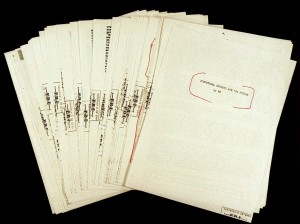What has been the lasting lesson of the Washington Post publishing the Unabomber’s manifesto?
Twenty years ago the Washington Post published a long and rambling manifesto written by a terrorist known as the Unabomber. The Unabomber said he would send another package full of explosives out through the mail if the paper did not publish his 35,000-word statement. This was a threat to be feared – The Unabomber had already killed three people and injured 23 over the previous 17 years.
The decision to publish the manifesto was not an easy one. The paper did not want to be giving in to blackmail. On the other hand, perhaps publishing the piece could stop the bombings. Just as importantly, publishing the manifesto might help someone recognize the author and lead to the bomber’s capture.
In the end, the publication of the manifesto did lead to the capture of Ted Kaczynski when his brother recognized the style of writing.
The Unabomber case shows how difficulty journalistic ethics can be. Remember that the tough ethical decisions are not between right and wrong but rather what do you do when nothing seems right.
Much has changed since the Washington Post published the manifesto on Sept. 19, 1995. The Post now could publish Kaczynski’s ramblings online instead of in an eight-page special section; Kaczynski could publish his manifesto himself online without needing the help of a major newspaper….
But the basic question remains – How do you make a decision about publishing something when you don’t like any of your choices?
Thanks to Paul Farhi, the Washington Post‘s media reporter for this great look back at an important part of recent journalistic history.

